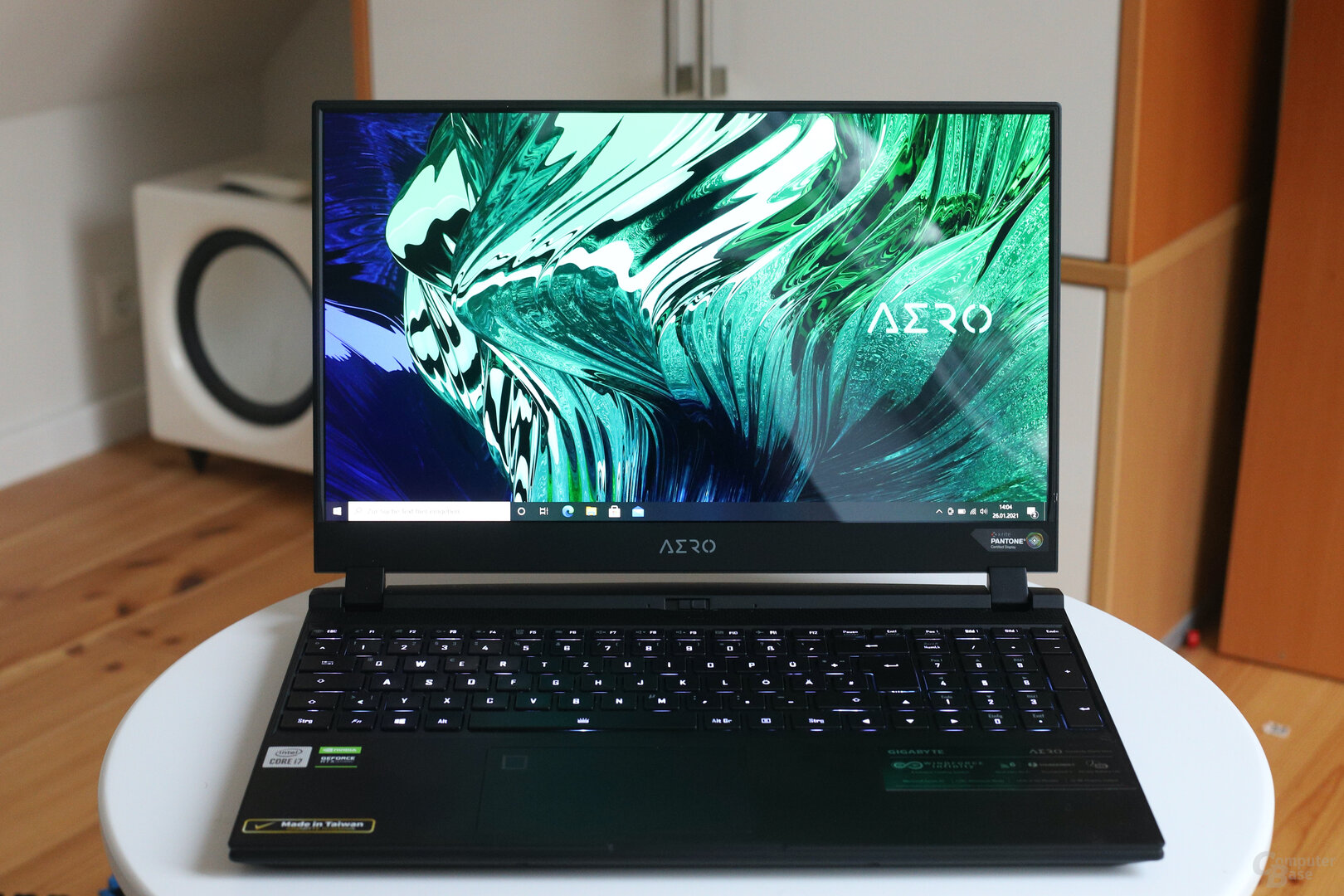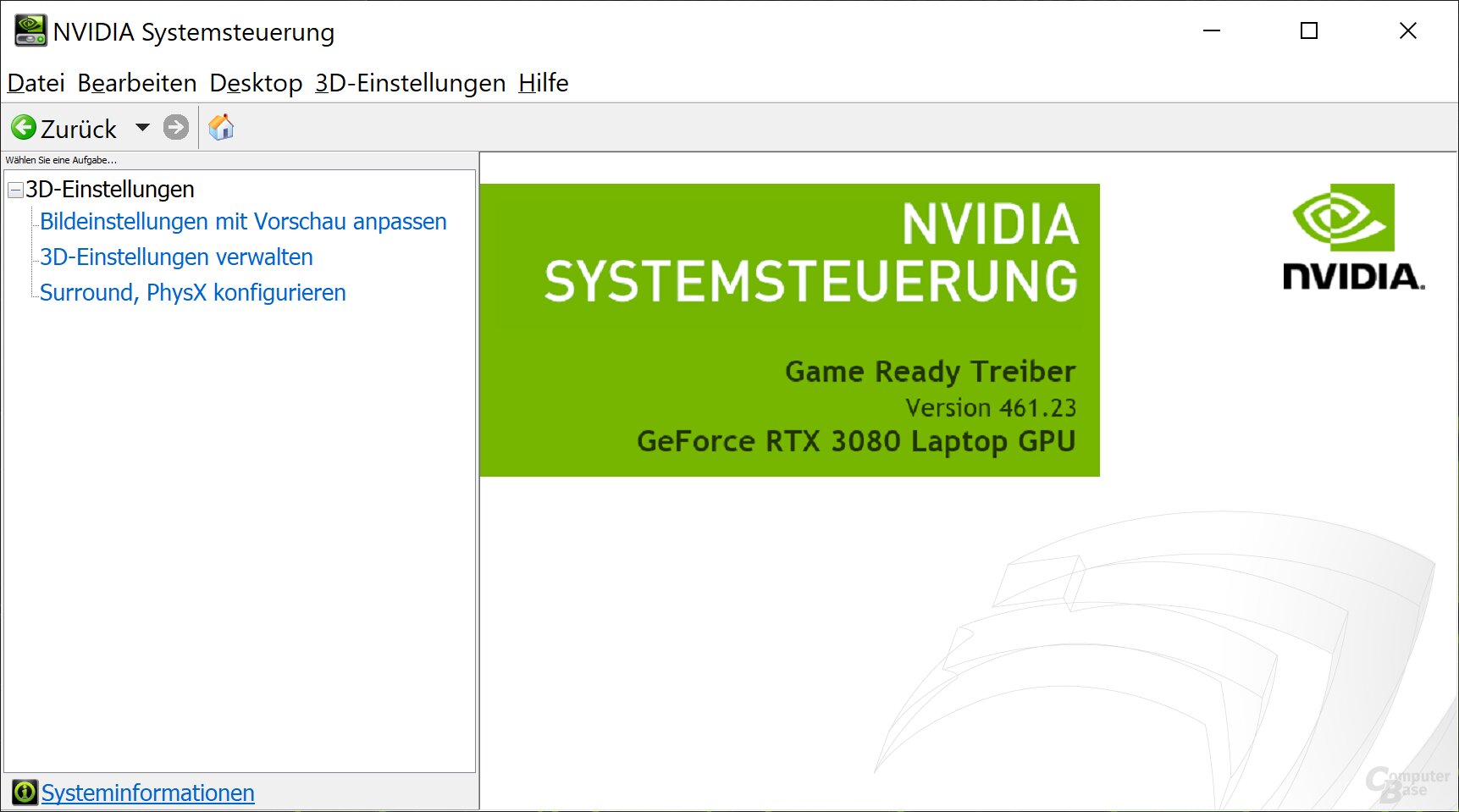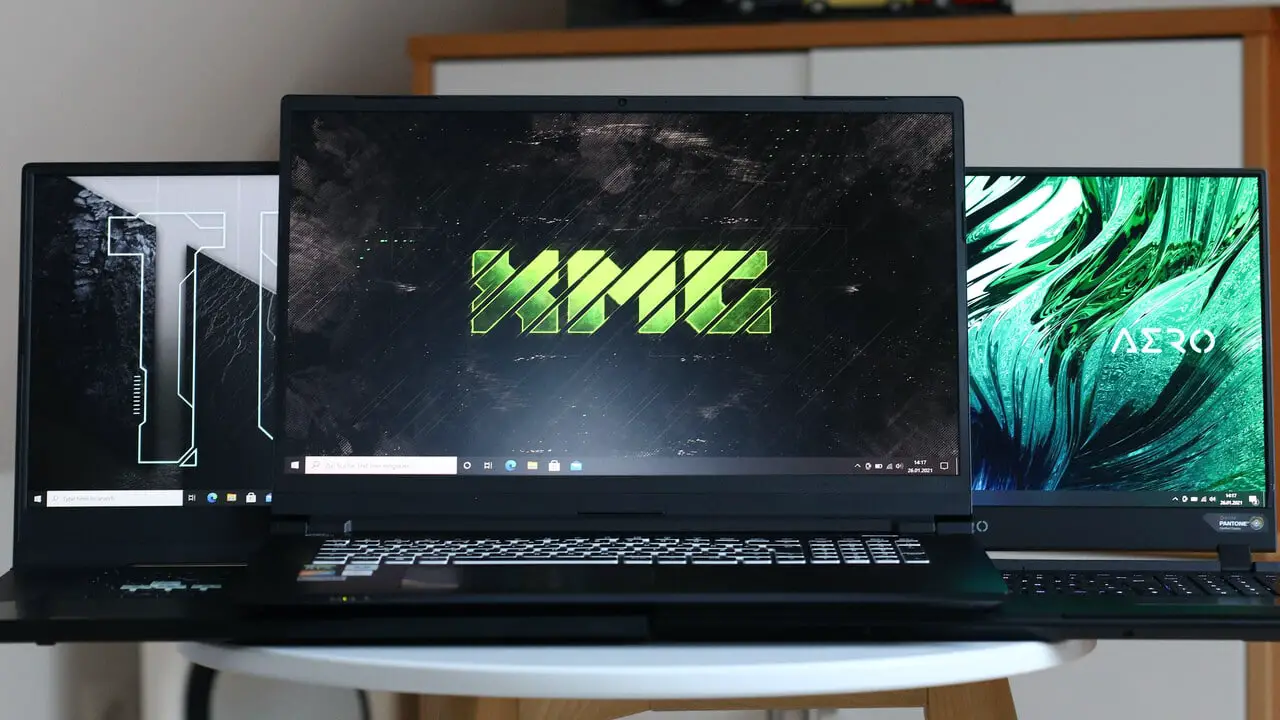Nvidia GeForce RTX 3080 & 3070 Laptop GPUs Config :Test |CUP | Specs |Config
Nvidia GeForce RTX 3080, 3070 and 3060 are now also available for notebooks. The new generation has improved on the old one in the test, but five and a half years after the GeForce GTX 980 it no longer offers high-end desktop performance for notebooks. That is why the “M” returns in the name, even if it is now called “Laptop GPU”.
Note from February 2, 2021: In the meantime, the review of the GeForce RTX 3060 laptop GPU has also been published on ComputerBase. It is a very interesting alternative for notebooks with a full HD display, because with a high TGP it is usually not a slower alternative.
Two years after the mobile versions of the GeForce RTX 2000 with Turing architecture, Nvidia presented the mobile GeForce RTX 3000 based on Ampere technology at CES. Once again, there are three variants at the start: GeForce RTX 3080, GeForce RTX 3070 and GeForce RTX 3060. The test embargo is now lifted for the two large models – notebooks equipped with them should be available immediately.
What sounds like a classic new edition with more power according to the scheme F, holds one or the other surprise on closer inspection. And with the new name, the departure from the norm that was last followed begins.
GeForce RTX 3080 and 3070 for notebooks in the test
ComputerBase had three notebooks with a mobile GeForce RTX 3000 alias GeForce RTX 3000 laptop GPU available for this first test:
- The Schenker Technologies XMG 17 Pro with GeForce RTX 3080 laptop GPU (optionally 95 or 105 watt TGP including Dynamic Boost 2.0) and Intel Core i7-10870H (Comet Lake-H, 8 cores, 16 threads, maximum 55 watt TDP).
- The Gigabyte Aero 15 OLED with GeForce RTX 3070 laptop GPU (optionally 95 or 105 watt TGP including Dynamic Boost 2.0) and Intel Core i7-10870H (Comet Lake-H, 8 cores, 16 threads, maximum 62 watt TDP).
- The Asus TUF Dash F15 with GeForce RTX 3070 laptop GPU (either 80 or 85 Watt TGP incl.Dynamic Boost 2.0) and Intel Core i7-11370H (Tiger Lake-H35, 4 cores, 8 threads, maximum 64 Watt TDP).

Laptop GPUs with up to 105 watt TGP in the test
The editors’ first look is directed at GeForce RTX 3000 laptop GPUs with a maximum of 105 watts (TGP + Dynamic Boost 2.0). With the GeForce RTX 3070 this is almost at the level of the fastest expansion stage (130 watts: 115 watts “Total Graphics Power” (TGP) + optional max. 15 watts Dynamic Boost 2.0), with the GeForce RTX 3080, however, it is still a long way off (165 watts: 150 watts TGP + optional max. 15 watts via Dynamic Boost 2.0). A 150+ watt sample of the RTX 3080 laptop GPU should actually have reached the editors as well, but it did not arrive on time due to delivery problems. This would also have included the Ryzen 9 5900HS based on AMD Cezanne. Corresponding tests will be submitted as soon as possible.
Mobile GPUs are now all “laptop GPUs”
Nvidia is now calling all of the new mobile graphics cards “laptop GPUs”. That sounds like a minor aside, but it isn’t. But on the contrary.
Once in 2015 and back
As a reminder: Until the end of 2015, Nvidia had marked mobile GPU variants as M versions. This meant, even if it was definitely not clear to all customers, that a GeForce GTX 980M did not come close to a GeForce GTX 980 for desktop PCs.
With the GeForce GTX 980 without the suffix “M”, Nvidia then presented a notebook GPU for the first time in September 2015, which virtually achieved the performance of the desktop version. It was based on the same GPU and used the same memory, only the consumption was slightly reduced. This was possible because Maxwell could already be operated very efficiently and economically in the desktop without direct resistance from AMD.
With the mobile GeForce GTX 1000, Nvidia made this change in the nomenclature in the series: Because all mobile GPUs should only be a maximum of 10 percent slower than the desktop version, the mobile GPUs were named like those for the desktop. A new addition were the particularly efficient Max-Q variants, which have been throttled again in terms of consumption and should be a maximum of 10 percent slower. This promise also worked out in reality.
The system was also retained in the subsequent RTX-2000 generation, although it was already falling apart, because the gap between the GPUs for desktop PCs and notebooks widened.
Now Nvidia is returning to the “M” of the generations for the GeForce GTX 980 with the suffix “Laptop GPU” used throughout the series. Why, becomes clear when looking at the technical key data of the new mobile variants.

The GeForce RTX 3000 laptop GPUs in detail
In the case of the GeForce GTX 1000 and GeForce RTX 2000, the mobile offshoots were GPUs with reduced consumption, as they were known from the desktop. They were based on the same GPUs with the same number of active units and used the same memory.
Laptop and desktop GPUs differ again
This is no longer the case with the new “GeForce RTX 3000 Laptop GPUs” and the top model, the “GeForce RTX 3080 Laptop GPU”, the difference to the desktop PC version is even very clear. In the desktop, however, the graphics card with 320 watts TDP also moves in completely new consumption regions, while the 3070 with 220 watts still remains at the RTX-2070 super level. A GeForce RTX 3080 with a large GA102 chip and GDDR6X was obviously not feasible 1: 1 in notebooks, and GeForce GTX 1080 Ti and GeForce RTX 2080 Ti with a large GPU have not been able to do so in recent years. GeForce RTX 3000 Laptop GPUs
The GeForce RTX 3080 changes the GPU
The mobile graphics card does not rely on the large GA102 with 8,704 active shaders, but on the GA104 known from the desktop GeForce RTX 3070 and 3060 Ti. The mobile version uses the full configuration with 6,144 active shaders for the first time, but it still lacks 30 percent shaders for the RTX 3080 FE. With the change of the GPU comes the change from a 320 to a 256 bit wide memory interface and instead of 9,500 MHz fast clocking GDDR6X there is a maximum 7,000 MHz fast GDDR6. The gap to the GeForce RTX 3080 for desktop PCs, together with the reduction in TDP, which drops from at least 320 to 150 + 15 watts, should be correspondingly large.
The GeForce RTX 3070 cuts down shaders
GeForce RTX 3070 laptop GPU and GeForce RTX 3070 FE are already closer: Both use the GA104 and GDDR6 on the 256-bit wide interface. However, Nvidia has removed 13 percent shaders from the mobile version and reduced the memory clock from 14 to 12 Gbps. The maximum power loss is 125 + 15 instead of 220 watts. On paper, however, the GeForce RTX 3070 FE and the laptop GPU are generally closer than the top model.
The GeForce RTX 3060 upgrades shaders
The GeForce RTX 3060 laptop GPU swims a little against the current. Like the GeForce RTX 3060 for desktop PCs announced for the end of February, it relies on the GA106 with a 192-bit interface and GDDR6, but can even use more execution units. Together with the “only” reduced power loss from 170 to 60 to 115 + 15 watts, this mobile GPU promises to be closest to its desktop counterpart.
16 GB and more watts for the top model
Because they use the same GPU, the GeForce RTX 3080 and 3070 for notebooks are also comparatively close on paper: The larger variant uses 20 percent more shaders, but uses the same memory interface. In practice, the performance advantage should therefore be less than 20 percent with the same power loss.
However, Nvidia gives the top model two unique selling points: On the one hand, the GeForce RTX 3080 laptop GPU can consume up to “150 + 15 watts” and not just a maximum of 125 + 25 watts, on the other hand it is available with 8 and 16 GB GDDR6 .
Max-Q stands for more than consumption, says Nvidia
Up to now, the Max-Q technology introduced by Nvidia with the mobile GeForce GTX 1000 has stood for the mobile variants that have been specially trimmed for efficiency and operated with an even lower power loss and lower memory clock rates for this purpose. Max-Q, TDP and GPU performance were therefore directly related. As an opposite pole, but never officially communicated by Nvidia, more and more OEMs recently advertised “Max-P”, ie configurations with maximum power dissipation for maximum “power”. If it is a Max-Q version, it was also called like this: “With Max-Q-Design” would then be where “Laptop GPU” will be everywhere in the future.
GeForce RTX 3000 laptop GPUs no longer have the addition “with Max-Q-Design” in their names. Nvidia says: Although Max-Q is retained, the technology now stands for a broader approach to increasing efficiency and no longer correlates only with the absolute power loss. It sounds like all GeForce RTX 3000 laptop GPUs could have Max-Q technology. However, Nvidia does not explain in detail which features have to be implemented by the OEM. Aspects such as Dynamic Boost 2.0, Whisper Mode 2.0, Resizable BAR and DLSS are mentioned on the company’s website.
Max-Q branding is not going away.
When we originally introduced Max-Q back in 2017, the brand was initially used in GPU naming since Max-Q referred to the GPU TGP only.
Today, 3rd Generation Max-Q is broader, and is a holistic set of platform technologies and design approach to building powerful and thin laptops.
In addition, to be more transparent about a laptop’s exact capabilities, RTX 30 Series laptops now show more information than ever, listing exact TGP, clocks and features supported. You will find this in the control panel which now reports maximum power (TGP+Boost), and support for key features including Dynamic Boost 2, WhisperMode 2, Advanced Optimus, and others, all of which fall under the Max-Q umbrella.
We strongly encourage OEMs to list clocks and other technologies a laptop supports, including Advanced Optimus, Dynamic Boost 2, and more. Ultimately, like all laptop features and specs, it is up to the OEM to market what their particular laptop configuration supports.
Nvidia to Max-Q with GeForce RTX 3000 laptop GPUs
A look at the specifications that Nvidia makes available to the OEMs, however, shows a completely different picture, namely the familiar picture: The Max-Q models are still the variants with the lowest power loss and reduced memory clock. Specifications as provided by Nvidia to OEMs.
Even if “GeForce RTX 3000 Laptop GPU with Max-Q-Design” had exceeded all requirements for short and concise product names and it is basically good that Nvidia with “Laptop GPU” basically takes the lower performance compared to the desktop into account, “Max -Q “must remain more visible for the customer in order to inform him about the performance not only in relation to the gaming PC, but also in the best possible way when choosing a notebook.
More transparency required from OEMs
According to its own statements, Nvidia has asked OEMs to communicate power dissipation and clock speeds of the GPUs in the notebook more openly. At the moment, however, this is rarely the case.
With the GeForce RTX 3000 for notebooks, Nvidia actually reveals more information: For the first time, the system information of the NVIDIA system control shows the maximum power dissipation that the GPU can use. However, this does not help the customer before making a purchase.

The sum of the standard power loss and the additional budget optionally set by the OEM via Dynamic Boost 2.0 is specified here.
On the next page: benchmarks















